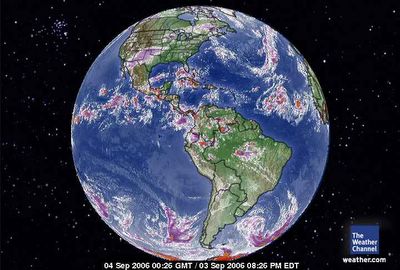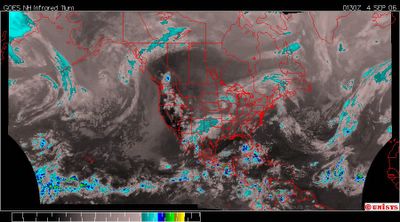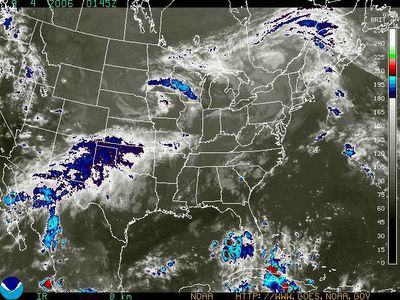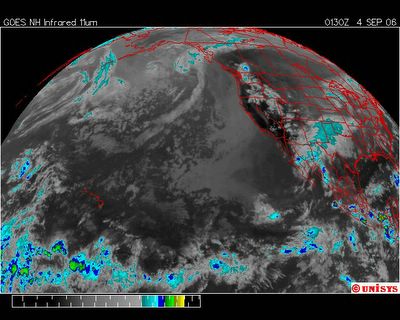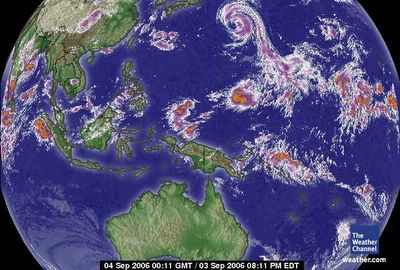
September 3, 2006.
1826 gmt.
Africa - Europe Satellite.
This is the best of all of them. Go, Africa. Gee whiz what a difference a quarter hemisphere makes. The carbon sinks are more than likely intact here. As a matter of fact a Nobel Peace Prize winner were growing forests. Right?
It's an interesting satellite in motion as well. The link is above. It doesn't keep animation going continuously as UNISYS does, so there is some manipulation that has to occur. Hm.

